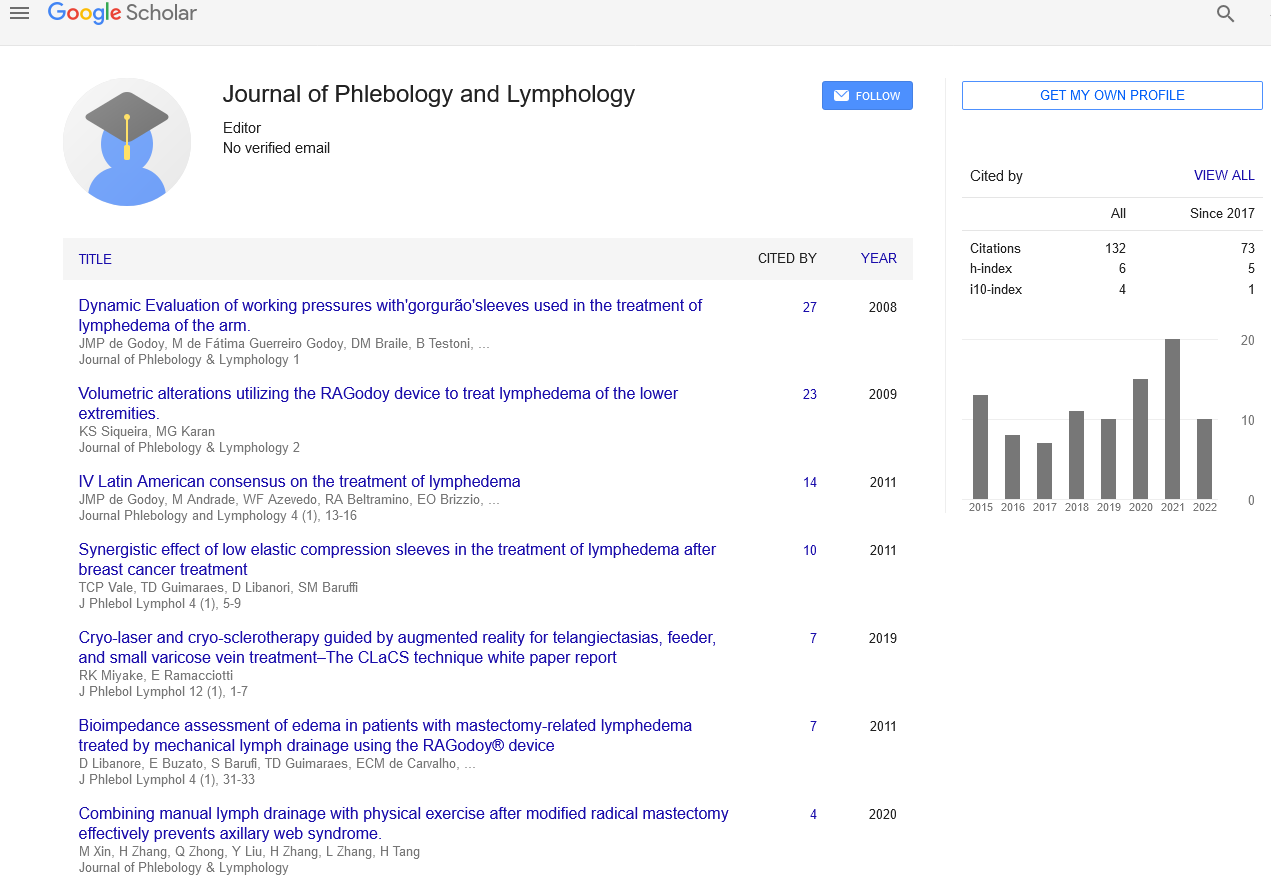Pathophysiology of varicose veins
Received: 10-Mar-2021 Accepted Date: Mar 25, 2021; Published: 01-Apr-2021, DOI: 10.37532/1983-8905.2021.14(2).12
Citation: Piotr A. Pathophysiology of varicose veins. J Phlebol Lymphol 2021;14(2):12.
This open-access article is distributed under the terms of the Creative Commons Attribution Non-Commercial License (CC BY-NC) (http://creativecommons.org/licenses/by-nc/4.0/), which permits reuse, distribution and reproduction of the article, provided that the original work is properly cited and the reuse is restricted to noncommercial purposes. For commercial reuse, contact reprints@pulsus.com
INTRODUCTION
Varicose veins are enlarged, swollen, and twisting veins, often appearing blue or dark purple. They happen when faulty valves within the veins allow blood to flow within the wrong direction or to pool. More than 23 percent of all adults are thought to be suffering from varicose veins. Varicose veins are generally benign. The cause of this condition is not known.
For many people, there are not any symptoms and varicose veins are simply a cosmetic concern. In some cases, they cause aching pain and discomfort or signal an underlying circulatory problem. Treatment involves compression stockings, exercise or procedures to shut or remove the veins.
Pathophysiology of Varicose Veins
Varicose veins are caused by increased vital sign within the veins. Varicose veins happen within the veins near the surface of the skin (superficial). The blood moves towards the guts by one-way valves within the veins. When the valves become weakened or damaged, blood can collect in the veins.
If symptomatic varicose veins are left untreated, they can lead to serious complications, including rashes, infections, bleeding, sores and blood clots. If your leg is already swollen, your complications could also be more severe.
Walking is particularly good for people that suffer from varicose veins, thanks to the very fact that walking may be a very low-impact workout. There is no jarring or pounding of your legs — just an easy movement that helps strengthen your calf muscles without straining your body.
Both poor blood circulation and blood clots can cause you to experience variety of painful problems like varicose veins or deep vein thrombosis (DVT). Avoiding dehydration by staying properly hydrated also will improve the strength of the muscles that support your veins.
The resulting twisted blue bulges, known as varicose veins, may cause your legs to feel heavy, tired or achy and make you feel self-conscious about their unsightly appearance, but they don't pose a major health threat. In general, ropy veins aren't a precursor to heart trouble.
“Massage may help reduce swelling or discomfort, but won't make varicose veins get away,” says Dr. Boyle. However, there are proven ways to treat them, especially when they're causing symptoms, such as: Swollen legs, ankles and feet.
If you've got varicose veins and knowledge any of the subsequent symptoms, it is time to offer your doctor a call: Severe and continuous pain and swelling within the legs. Heaviness and/or dull, achy feeling within the legs at the top of the day, or after physical activity.
Telangiectasia can have causes that aren't due to underlying disease. Spider veins occur when blood pools in veins near the surface of the skin. They can be caused by heredity, obesity, trauma, and fluctuations in hormone levels. In many cases, the exact cause is not known. They tend to become more numerous with age, and are common among people over 30 and in pregnant women.
Exercise regularly to improve your leg strength, circulation, and vein strength. Control your weight to avoid placing too much pressure on your legs. Do not cross your legs when sitting and try to elevate your legs when resting. Wear compression stockings. Do not stand for long periods of time.
Deep vein thrombosis, a possible consequence of untreated vein disease, can cause the kinds of clots which will cause a stroke.





